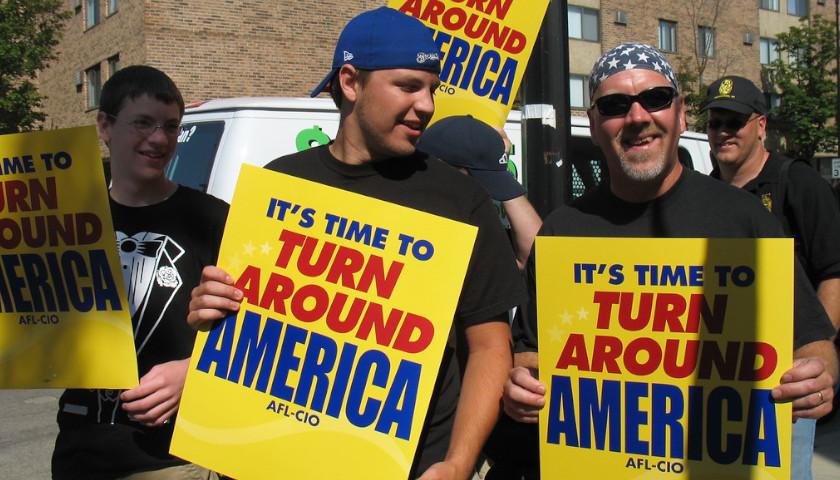by Casey Harper
The percentage of hourly and salaried workers in a union decreased in 2023, continuing a trend of ongoing decline in the past few decades.
The decline in 2023 was small, from 10.1% of the workforce to 10% even, but the trend is significant. In 1983, about 20% of hourly and salaried workers were in a union, meaning U.S. union membership has halved in about four decades.
While unions did add 139,000 more members last year, their overall share of the labor market decreased as the number of new non-union jobs outpaced union job growth.
“Increasingly, Americans realize they can negotiate their own workplace terms without handing over part of their hard-earned paycheck to a union boss who probably doesn’t even know their name,” Ashley Varner of the Freedom Foundation told The Center Square. “Government employee unions are highly political organizations that aren’t held accountable to a profit-margin or a consumer base and government workers are seeing they get more value from keeping those union dues dollars in their pockets to put more gas in their cars and more food on their family dinner table.”
The Freedom Foundation has been working to tell public union members that they can opt out of their unions, with notable success that has contributed to the public union membership percentage decline.
Public sector workers’ ability to opt-out of paying union dues came after a landmark 2018 Supreme Court case, Janus v. AFSCME, where the high court ruled that public union members could opt-out of paying union dues, something that was largely not allowed before the ruling.
The overall decrease in 2023 came more from public unions while the private sector unionization rate remained unchanged.
Public sector unions are much stronger than private. According to BLS data, 32%.5 of the public workforce is in a union, compared to 6% in the private sector.
Meanwhile, unions have been highly political during this decline in power, in recent years almost exclusively giving to and supporting Democratic candidates. According to Open Secrets, during the 2019-2020 election cycle, public sector unions gave $18.84 million to Democrats and $2.26 million to Republicans.
This politicization has driven some right-leaning members to question their role in the union.
“Joe Biden promised to be the most pro-union president in American history, but even while requiring union labor for government contracts, he’s still sitting on the lowest government union membership rate since we started keeping numbers, because the big union bosses in Washington, DC enrich themselves off the backs of the rank-and-file,” Varner said, adding that “when government employees find out they don’t have to pay a union as a condition of employment, they drop their membership in droves.”
The Biden administration, though, has focused on their wins and the new additions of union members. Biden has been outspoken in his effort to be, as he said in his 2021 Labor Day remarks, “the most pro-union administration in American history.”
Acting Secretary of Labor Julie Su, whose confirmation as secretary has been stalled in the Senate, pointed to certain industries that have seen an increase in unionization.
“We have seen large private sector increases in unionization among health care workers, transportation and warehousing workers, and in educational services,” Su said in a statement. “These are workers who recognize that they have power and are organizing to use that power. Workers in health care, auto manufacturing, transportation, entertainment and more have delivered big wins at the bargaining table in the past year.”
– – –
Casey Harper is a Senior Reporter for the Washington, D.C. Bureau of The Center Square. He previously worked for The Daily Caller, The Hill, and Sinclair Broadcast Group. A graduate of Hillsdale College, Casey’s work has also appeared in Fox News, Fox Business, and USA Today.
Photo “Union Protesters” by AFL-CIO America’s Unions. CC BY 2.0.




